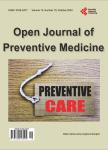Using UNAIDS’s organizing framework to assess Nigeria’s national HIV monitoring and evaluation system
Using UNAIDS’s organizing framework to assess Nigeria’s national HIV monitoring and evaluation system作者机构:Measure Evaluation Project John Snow Inc. Washington D.C. USA Monitoring and Evaluation Zimbabwe AIDS Network Harare Nigeria National AIDS and STIs Control Programme Federal Ministry of Health Abuja Nigeria Strategic Knowledge Management National Agency for the Control of AIDS (NACA) Abuja Nigeria USAID/Nigeria Abuja Nigeria
出 版 物:《Open Journal of Preventive Medicine》 (预防医学期刊(英文))
年 卷 期:2012年第2卷第3期
页 面:372-378页
学科分类:1002[医学-临床医学] 100214[医学-肿瘤学] 10[医学]
主 题:HIV/AIDS Nigeria 12 Components M&E System
摘 要:The Nigeria National Response Management Information System (NNRIMS), developed in 2004 as a framework for monitoring and evaluating the country’s response to HIV, does not function at an optimum level due to several challenges, including a confusing proliferation of vertical reporting systems, competition among sectors, and the nascent nature of the monitoring and evaluation (M&E) sub-systems within many institutions. An assessment of the existing M&E system was conducted to verify whether the system has the capacities to provide essential data for monitoring the epidemic and identifying critical programming gaps. Nigeria’s National Agency for the Control of AIDS (NACA) used an organizing framework for a national HIV M&E system developed by UNAIDS, to assess the strengths and weaknesses of the NNRIMS to generate data for evidence-based decisionmaking. The participatory approach used during an assessment workshop ensured that the process was country-led and -owned to build consensus and local capacity, and that it encouraged adoption of a single national-level multisectoral HIV M&E system. The assessment found an operable M&E system at the national level but a much weaker system at the state and local levels and across seven other sectors. There are multiple data collection and reporting tools at the facility level that lead to vertical reporting systems, which increases the burden of reporting at lower levels, especially by service providers. Human resources are being developed, but problems remain with the quantity and quality of staff. Data use, though evident at the national level, is still very weak among five of the seven sectors assessed. The assessment results have been used to develop a national costed M&E workplan to which all stakeholders contributed in a coordinated response to strengthen the system.



